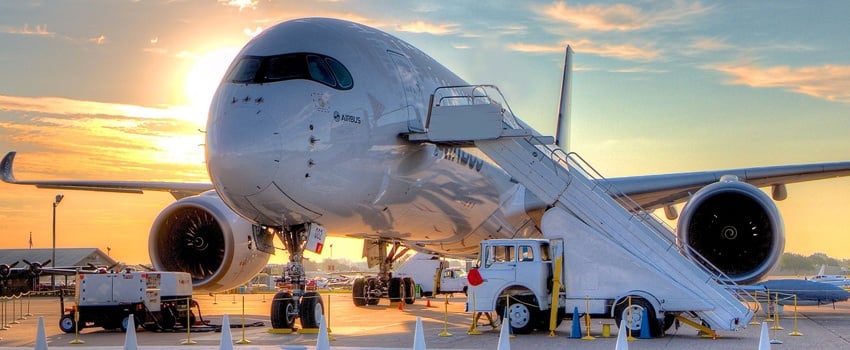- At over 240 feet long, the A350-1000 is nearly the length of a football field.
- The Rolls-Royce Trent XWB engines on the A350-1000 produce 97,000 lbs of thrust.
- The A350-800 has a range of 8,000+ nautical miles, enough to fly between London and New York 2.5 times without refuelling.
- Over 70% of the A350's weight-efficient airframe is made from advanced materials that combine composites (53%), titanium and advanced aluminium alloys.
- The A350-1000's weight of 308 tons is equivalent to 241 Cessna Skyhawks.
- Many commercial aircraft have eight fuel tanks - the A350 XWB only has three. One tank is located below the fuselage, while the other two are in the wings.
- To purchase one, you'll need approximately $290 million.
- With a full-LED lighting system that creates more than 16 million different colour options, the A350 has plenty of options for mood-lighting.
- The avionics is designed to operate more than 40 functions. In comparison, the avionics of the A380 is designed to manage only 23 different functions.
- The Airbus A350 was initially to be called the A330-lite. The project of building a completely new plane started way back in 2004.
On top of all this, the A350 also boasts a delivery of up to 25% in fuel savings, greater space, flying times of up to 19 hours, increased passenger well-being and many other innovations. This makes the Airbus A350, without question, a major leap forward for many airlines.
The importance of Document Management
for Airbus fleets
However, as with any new fleet planning, it is important to consider the initial process to ensure your new fleet is ready to leave the tarmac on time. From an operational, compliance and safety perspective, document management is a key aspect of this risk and with a new fleet.
When it comes to managing Airbus manuals, it can be overwhelming for your in-house publishing team to maintain structured XML data - meaning your manuals could take a long time to be updated. Additionally, with Airbus regularly releasing new updates up to three times a year, these revision peaks can end up taking their tolls and mistakes tend to be made, slowing down the process even further.
However, even with all that, using XML does hold value for airlines so there are benefits in understanding how it works and what kind of capabilities are needed to maintain such complex documents - it just takes the right document management system to help you do so.
Image used with permission from: John Trautschold

